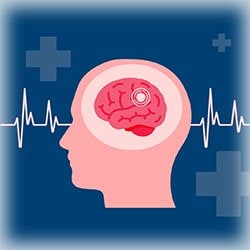Differences and Similarities Between Strokes and Mini-Strokes
 Whether you are experiencing one or the other, the signs and symptoms of a stroke and a transient ischemic attack (TIA), commonly referred to as a mini-stroke, are often so similar that it may be hard to tell what’s going on in your brain and when you need immediate medical attention.
Whether you are experiencing one or the other, the signs and symptoms of a stroke and a transient ischemic attack (TIA), commonly referred to as a mini-stroke, are often so similar that it may be hard to tell what’s going on in your brain and when you need immediate medical attention.
“Knowing the differences and similarities between strokes and ministrokes can help you to better determine what may be happening should you or someone near you experience symptoms,” says Adrian Burgos MD, PIH Health neurologist.
What is actually occurring during a stroke versus a mini-stroke?
A stroke happens when there is a loss of blood flow and oxygen to the brain due to a blockage in an artery supplies blood to the brain. This is often caused by a blood clot or build-up of plaque in the blood vessel, or the rupturing of a blood vessel in the brain.
A mini-stroke or TIA happens when blood flow to the brain is temporarily blocked, causing symptoms that are similar to a stroke, but the blockage is brief enough that symptoms can resolve quickly.
What are the similarities between strokes and mini-strokes?
For both strokes and mini-strokes, blood flow to the brain is suddenly disrupted, causing the following symptoms:
- Feeling dizzy, loss of balance, or lack of coordination
- Blurred or double vision, or sudden loss of vision
- Numbness or weakness on one side of the body
- Sudden, severe headache
- Slurred speech, difficulty speaking or understanding speech
What are the main differences between strokes and mini-strokes?
The duration and severity of symptoms differentiate strokes and mini-strokes.
When blood flow to the brain is disrupted during a stroke, symptoms continue or worsen until healthy blood flow is restored. The longer it takes for blood flow to be restored, the more severely brain tissue may be damaged, potentially causing permanent disability.
In the case of a mini-stroke, disruption in blood flow is only temporary and brief so symptoms usually go away relatively quickly, only lasting a few minutes and usually resolving in less than an hour, although they can linger for up to 24 hours. With blood flow only being disrupted for a brief duration, mini-stroke symptoms are not as severe, damage to brain tissue is minimal, and no permanent disability is caused.
What should you do if you see signs of stroke or mini-stroke?
“Since it is hard to differentiate at first whether someone is having a stroke or mini-stroke, both should be considered medical emergencies, and help should be called for right away,” says Dr. Burgos. “Additionally, a mini-stroke is usually a warning sign that a person is at an increased risk of stroke. The risk of stroke is especially high within the first 48 hours following a mini-stroke.”
Time is of the essence when someone has a stroke, so it is important not to wait around to see if the symptoms resolve themselves. The longer it takes for a stroke victim to receive emergency medical care, the more likely they will experience brain damage and disability. If you suspect a stroke or mini-stroke, always call 911.
“If you suspect you someone may be having a stroke or mini-stroke, don’t wait to try and figure out which one it is,” says Dr. Burgos. “The sooner a person having a stroke gets to a hospital, the better the odds of recovery. The single most important factor in the successful treatment of stroke is getting treatment as quickly as possible.”
Visit PIHHealth.org/Stroke for more information about the Stroke Program at PIH Health. To find a PIH Health doctor near you, visit PIHHealth.org/Doctors